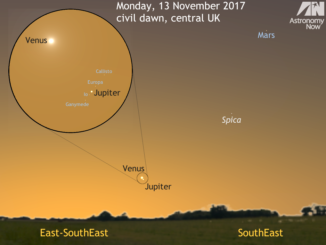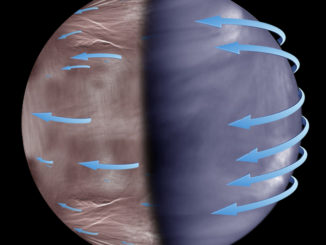The second planet from the Sun, Venus, is often described as Earth’s evil twin, being almost exactly the same size (Venus’ diameter is 12,104 kilometres, just slightly less than Earth’s 12,756 kilometres) but having a climate that has dramatically diverged from our planet’s.
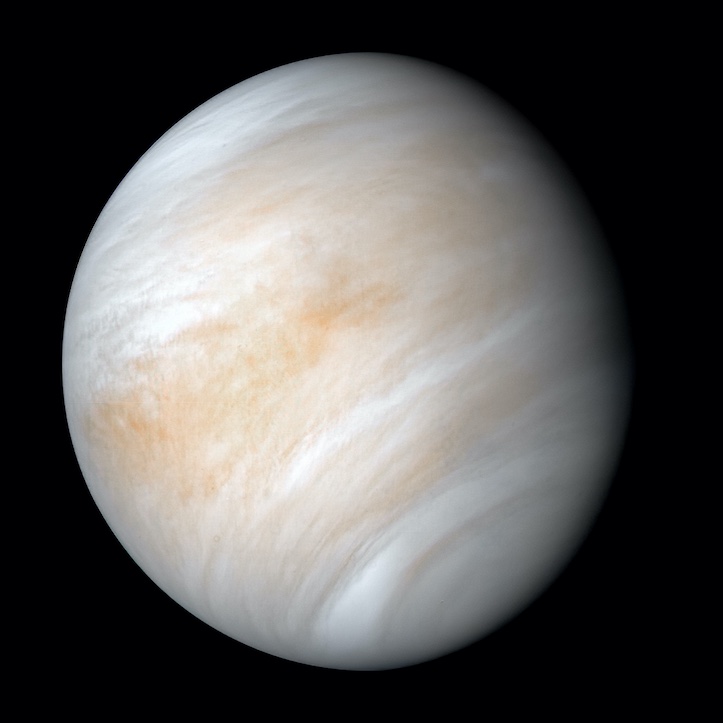
Venus is everything that life wouldn’t want from a planet – it’s hot, it’s dry, the air is choking, the surface pressure is intense, winds constantly blow at a gale, lightning forks incessantly through the skies, and the Sun never, ever comes out.
Once upon a time, Venus may have been more like the young Earth. It may not have had life, either of the animal or plant variety (although there have recently been disputed claims for microbial life producing phosphine in the clouds of Venus), but it probably did have some water, maybe even in the form of oceans reflecting a blue sky. Conventional wisdom supposed that Venus’ proximity to the Sun – it orbits at a distance of 108 million kilometres (0.72 astronomical units), with a year on Venus taking 225 Earth days – meant that it heated up over the course of a few hundred million years, evaporating its oceans and developing a runaway greenhouse effect.
However, this view of Venus’ past is beginning to change. Its temperate climate may have instead lasted for billions of years, until about 700 million years ago when something catastrophic occurred – a global volcanic cataclysm that saw large swathes of the surface of Venus covered in lava, which is why today we see barely any craters on Venus that are older than 700 million years. Observations by spacecraft find evidence for more than 1,000 volcanoes on Venus that are larger than 20 kilometres across. There’s even some tentative evidence that one or two of them may still be active.
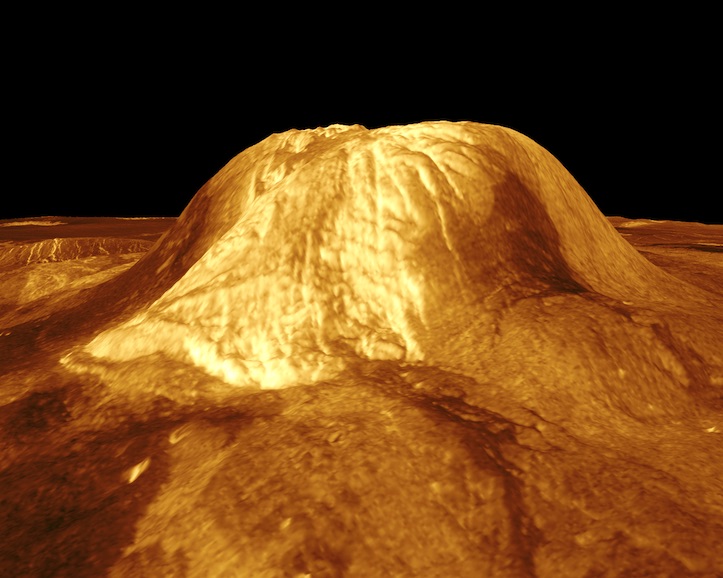
In their heyday, these volcanoes pumped extraordinary amounts of carbon dioxide into Venus’ atmosphere. As a greenhouse gas, the surplus carbon dioxide caused temperatures to rise, leading to the oceans to evaporate, releasing vast amounts of water vapour (which is also a greenhouse gas) into the atmosphere. This led to a runaway greenhouse effect and the planet that we see today, where temperatures at the surface reach 460 degrees Celsius, which is hot enough to melt lead, and the atmosphere is 96.5 per cent carbon dioxide, in the form of thick clouds laced with sulphuric acid. Compare that to Earth, where only 0.04 percent of the atmosphere’s volume is carbon dioxide. Venus’ atmosphere is so thick and dense that the only way to map the surface is using radar or infrared light to penetrate the clouds, and the atmospheric pressure at the surface is 90 times that on Earth – it’s like being 1.5 kilometres under water.
Barely any water exists now in Venus’ atmosphere, the water molecules all having been broken apart by the energy of ultraviolet light from the Sun and the component hydrogen molecules lost to space on the solar wind, while the oxygen has been locked into oxidised rocks on the surface.

Venus, which has no moons, has been a popular target for space missions, particularly in the early days of spaceflight as the second planet from the Sun was a relatively simple world to reach. The Soviet Union in particular seemed to make conquering Venus their mission, with no less than 29 missions there, although many failed. The first spacecraft to fly past Venus was NASA’s Mariner 2 in 1962, while Venera 4 proved to be the Soviet Union’s first real success in 1967, dropping into the atmosphere by parachute and taking preliminary readings before being crushed by the intense pressure of the clouds at an altitude of 25 kilometres. More fly-bys from both the Soviet Union and the United States followed, and Venera 8 became the first spacecraft to land on another planet in 1972, although it was not equipped with a camera. The first black and white pictures from the surface of Venus came from Venera 9 in 1975, and the first colour pictures from Venera 13 in 1982.

More modern missions to Venus included NASA’s Magellan, which imaged the surface through the thick Venusian clouds using radar in the 1990s, and the European Space Agency’s Venus Express, which orbited Venus between 2006 and 2014 and made discoveries about the planet’s atmosphere, its surface and connections between the two, before deliberately crashing and burning in Venus’ atmosphere at the end of its mission. Japan’s Akatsuki probe entered orbit around Venus at the second attempt in 2015 (a misfiring thruster meant it sailed past the planet on its first attempt in 2010) and as of summer 2021 it is still operational, tasked with studying the dynamics of Venus’ atmosphere, finding jet streams and gravity waves, and mapping the planet’s cloud structure.
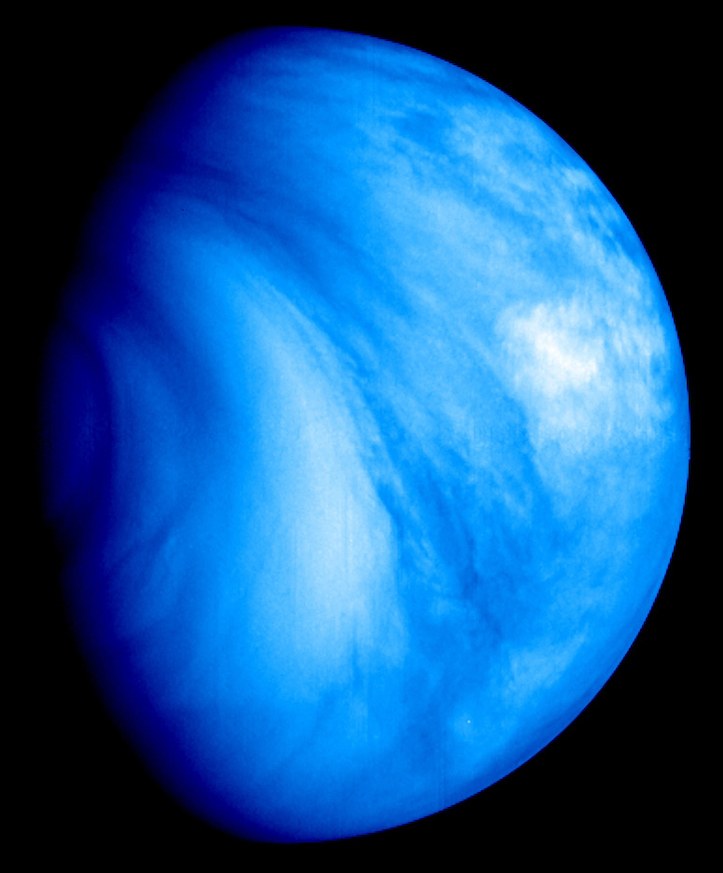
NASA currently have two Venus missions under development. One of these, set to launch in 2028, is VERITAS (Venus Emissivity, Radio Science, InSAR, Topography ad Spectroscopy), which will map the surface in radar and infrared and determine its geological history. The other, which will launch around the same time, is DAVINCI+ (Deep Atmosphere Venus Investigation of Noble Gases, and Imaging, Plus), which will consist of both an orbiter and a probe that will parachute through the atmosphere, in an effort to better understand how Venus’ carbon dioxide atmosphere formed. Meanwhile, the European Space Agency is headed for Venus with its EnVision mission that will launch in 2031 to study how the planet’s climate diverged so greatly from that of Earth.

